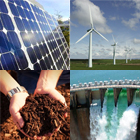
Bihar
Why Bihar? | Climate | Industry | Electricity
The state of Bihar is located in northern India, (see map below), the state is fully landlocked and predominately flat plains with many rivers flowing through it (including the Ganges and its tributaries. The region has significant amounts of fertile farming land and thus the economy of Bihar relies mainly on agriculture, with very little industry.
Approximately only 20% of Biharís rural villages have been electrified (6287 electrified villages) [i], therefore there is a large proportion of the population that do not have access to electricity, this limits any potential development that may occur in Bihar. This area of the world has great potential for the introduction of electricity, particularly as India economy grows, and therefore we decided Bihar could potentially implement a microgrid.
The state of Bihar has two seasons, a dry season and the monsoon season (June to September), as a result of this there are several extremes of conditions. During the summer months the temperature can reach 45įC [ii] and during the winter months as low as 5įC [iii]. As Bihar is landlocked and the terrain is flat the average wind speeds are low, a maximum of 4m/s, the only exceptions are areas around various small hills, such as the Rajgir hills. The rainfall averages at 1205mm/year [iv], although this can be greatly exceeded when the Monsoon season is particularly heavy. As a result of the monsoon climate and the large number of rivers in the state Bihar is the stat in India that floods the most [v], this presents many challenges to development in Bihar as any development must be adapted to cope with severe flooding.
Bihar has very little industry outside of agriculture, as such it is one of the poorest states in India with a GDP per capita of Rs 6610 (Assocham Eco Pulse States Performance in Per Capita Income Growth, January 2008). Biharís main commercial products are rice, wheat, lentils, maize and sugar cane, the key manufacturing plants include a button factory and a fertiliser factory.
Bihar has limited electricity, currently in the state there are only three power generator plants within Bihar (Barauni Thermal Power station, Muzaffarpu Thermal Power Station and Koshi Hydel Power Station) [vi], therefore there has been focused investment in increasing the amount of generation so that the current grid is able to meet the existing demand. As a consequence of this focus, many villages have not been considered for the implementation of electricity and are consequently reliant on traditional methods of heating and lighting, such as kerosene lamps.
References
[i] http://rggvy.gov.in/rggvy/rggvyportal/index.html
[ii] http://www.biharonline.in/Profile/Geography/climate.asp accessed 05/02/11
[iii] http://bstdc.bih.nic.in/FactFile.htm accessed 04/02/11
[iv] http://gov.bih.nic.in/Profile/default.htm accessed 05/02/11
[v] http://fmis.bih.nic.in/history.html accessed 06/02/11
[vi] http://bseb.bih.nic.in/Generation.htm accessed 07/02/11



